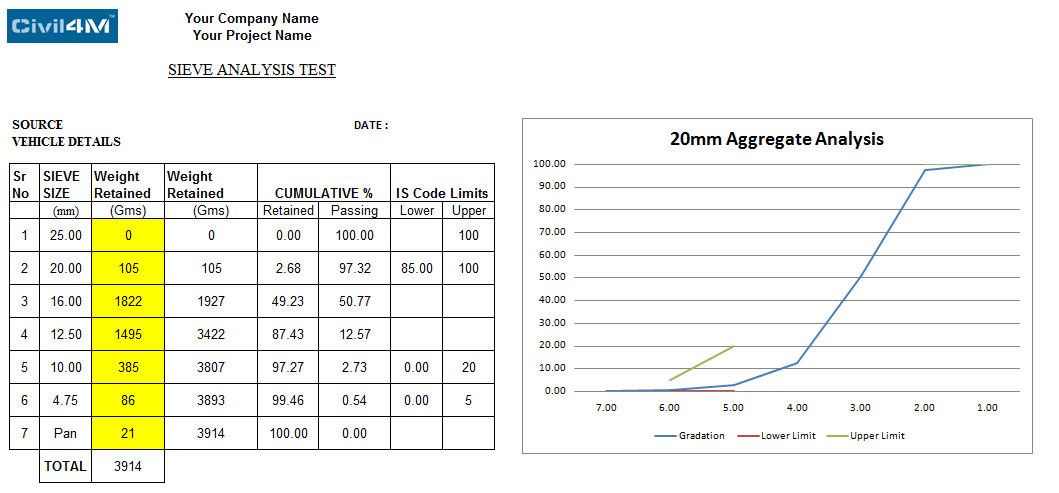Chemical Requirements of Cement as per IS Codes
[TABLE=collapse,alternate]
[TR]
[TH]Types of Cements[/TH]
[TH]OPC 33
Grade[/TH]
[TH]OPC 43
Grade[/TH]
[TH]OPC 43S
Grade[/TH]
[TH]OPC 53
Grade[/TH]
[TH]OPC 53S
Grade[/TH]
[TH]SRC[/TH]
[TH]
PPC (Flyash
Based)[/TH]
[TH]PSC[/TH]
[/TR]
[TR]
[TD]
IS Code
[/TD]
[TD]
269
[/TD]
[TD]
269
[/TD]
[TD]
269
[/TD]
[TD]
269
[/TD]
[TD]
269
[/TD]
[TD]
12330
[/TD]
[TD]
1489 part 1
[/TD]
[TD]
455
[/TD]
[/TR]
[TR]
[TD]Ratio of percentage of lime to percentage of silica , aluminium and iron oxide, when calculated by formula
Cao - 0.7 SO[SUB]3[/SUB]
---------------------------------------------
2.8 SiO[SUB]2 [/SUB]+ 1.2 Al2O[SUB]3[/SUB] + 0.65 FeO[SUB]3[/SUB][/TD]
[TD]
0.66 to 1.02
[/TD]
[TD]
0.66 to 1.02
[/TD]
[TD]
0.80 to 1.02
[/TD]
[TD]
0.80 to 1.02
[/TD]
[TD]
0.80 to 1.02
[/TD]
[TD]
0.66 to 1.02
[/TD]
[TD]
-
[/TD]
[TD]
-
[/TD]
[/TR]
[TR]
[TD]Ratio of percentage of Aluminium to that of iron oxide, Min[/TD]
[TD]
0.66
[/TD]
[TD]
0.66
[/TD]
[TD]
0.66
[/TD]
[TD]
0.66
[/TD]
[TD]
0.66
[/TD]
[TD]
-
[/TD]
[TD]
-
[/TD]
[TD]
[/TD]
[/TR]
[TR]
[TD]Insoluble residue, percentage by mass, Max[/TD]
[TD]
5
[/TD]
[TD]
5
[/TD]
[TD]
2
[/TD]
[TD]
5
[/TD]
[TD]
2
[/TD]
[TD]
4
[/TD]
[TD]
4 (100-x)
--------------
x + 100
[/TD]
[TD]
4
[/TD]
[/TR]
[TR]
[TD]Magnesia, percentage by mass, Max[/TD]
[TD]
6
[/TD]
[TD]
6
[/TD]
[TD]
5
[/TD]
[TD]
6
[/TD]
[TD]
5
[/TD]
[TD]
6
[/TD]
[TD]
6
[/TD]
[TD]
8
[/TD]
[/TR]
[TR]
[TD]Total sulphar content calculated as sulphuric acnhydride (SO3). Percentage by mass, Max.[/TD]
[TD]
3.5
[/TD]
[TD]
3.5
[/TD]
[TD]
3.5
[/TD]
[TD]
3.5
[/TD]
[TD]
3.5
[/TD]
[TD]
2.5
[/TD]
[TD]
3
[/TD]
[TD]
3
[/TD]
[/TR]
[TR]
[TD]Loss on ignition, percentage by mass, max[/TD]
[TD]
5
[/TD]
[TD]
5
[/TD]
[TD]
4
[/TD]
[TD]
4
[/TD]
[TD]
4
[/TD]
[TD]
5
[/TD]
[TD]
5
[/TD]
[TD]
5
[/TD]
[/TR]
[TR]
[TD]Chloride content, percentage by mass, Max[/TD]
[TD]
0.1
[/TD]
[TD]
0.1
[/TD]
[TD]
0.1
[/TD]
[TD]
0.1
[/TD]
[TD]
0.1
[/TD]
[TD]
[/TD]
[TD]
[/TD]
[TD]
[/TD]
[/TR]
[TR]
[TD]Chloride content, percentage by mass, Max (for prestress structures)[/TD]
[TD]
0.05
[/TD]
[TD]
0.05
[/TD]
[TD]
0.05
[/TD]
[TD]
0.05
[/TD]
[TD]
0.05
[/TD]
[TD]
[/TD]
[TD]
[/TD]
[TD]
[/TD]
[/TR]
[/TABLE]
where “ x” is the fly ash content used in the production of cement
Note in IS code for Alkali Content
Alkali aggregate reaction have been noticed in aggregates in some parts of region. On large and important jobs where the concrete is likely to be exposed to humid atmosphere or wetting action, it is advisable that the aggregate be tested for alkali aggregate reaction. in the case of reactive aggregates, the use of cement with alkali content below 0.6 percent expressed as sodium oxide (Na[SUB]2[/SUB]O + 0.658 K[SUB]2[/SUB]O), is recommended. where, however such cements are not available, use of alternative means me be resorted to for which a reference may be made to appropriate provisions on durability in the concrete codes. If desired by the purchaser, the manufacturer should carry out the test for alkali content.


